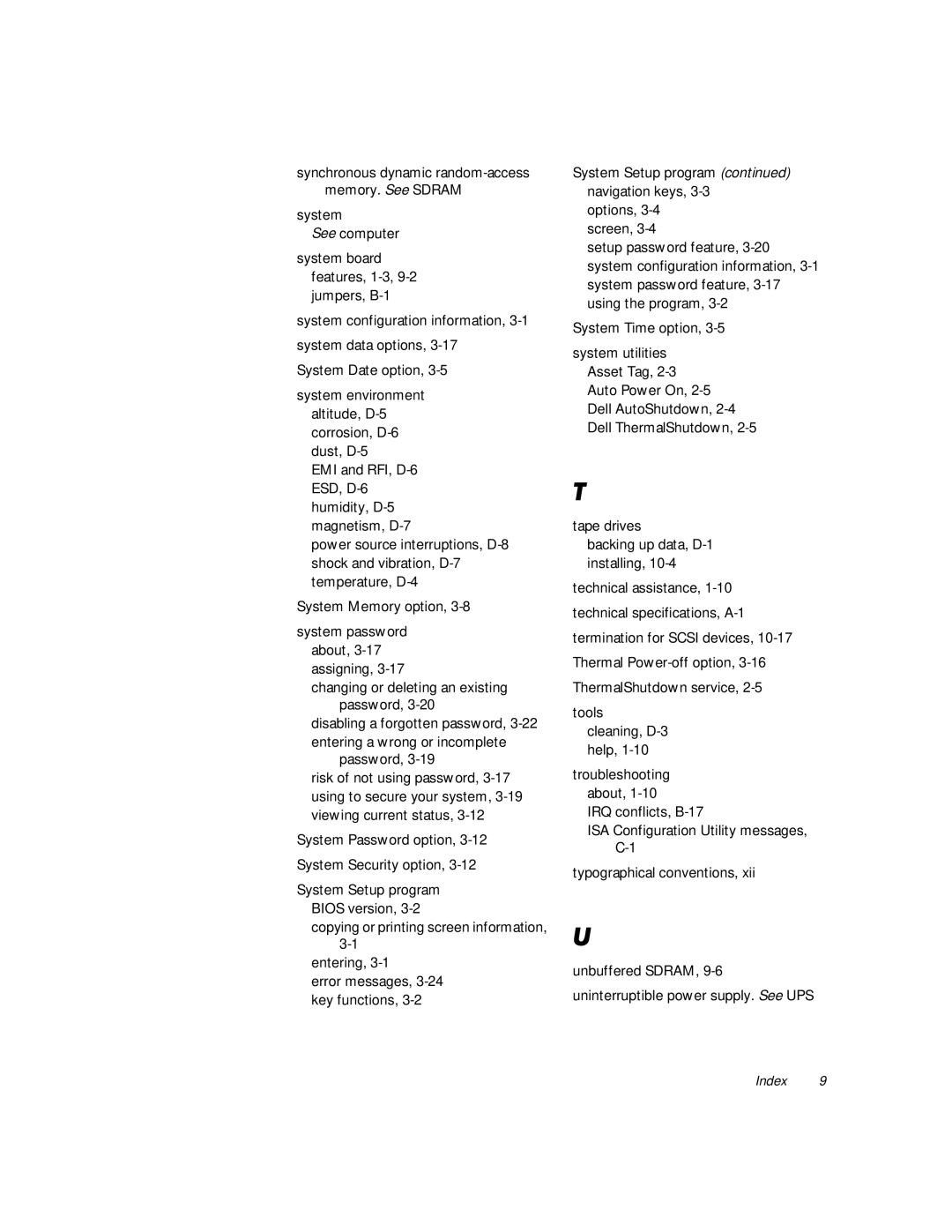synchronous dynamic random-access memory. See SDRAM
system
See computer
system board features,
system configuration information,
system data options,
System Date option,
system environment altitude,
EMI and RFI,
power source interruptions,
System Memory option,
system password about,
changing or deleting an existing password,
disabling a forgotten password,
password,
risk of not using password,
System Password option,
System Security option,
System Setup program BIOS version,
copying or printing screen information,
entering,
error messages,
System Setup program (continued) navigation keys,
options,
setup password feature,
System Time option,
system utilities Asset Tag,
Dell AutoShutdown,
7
tape drives
backing up data,
technical assistance,
technical specifications,
termination for SCSI devices,
Thermal
ThermalShutdown service,
tools cleaning,
troubleshooting about,
IRQ conflicts,
ISA Configuration Utility messages,
typographical conventions, xii
8
unbuffered SDRAM,
uninterruptible power supply. See UPS
